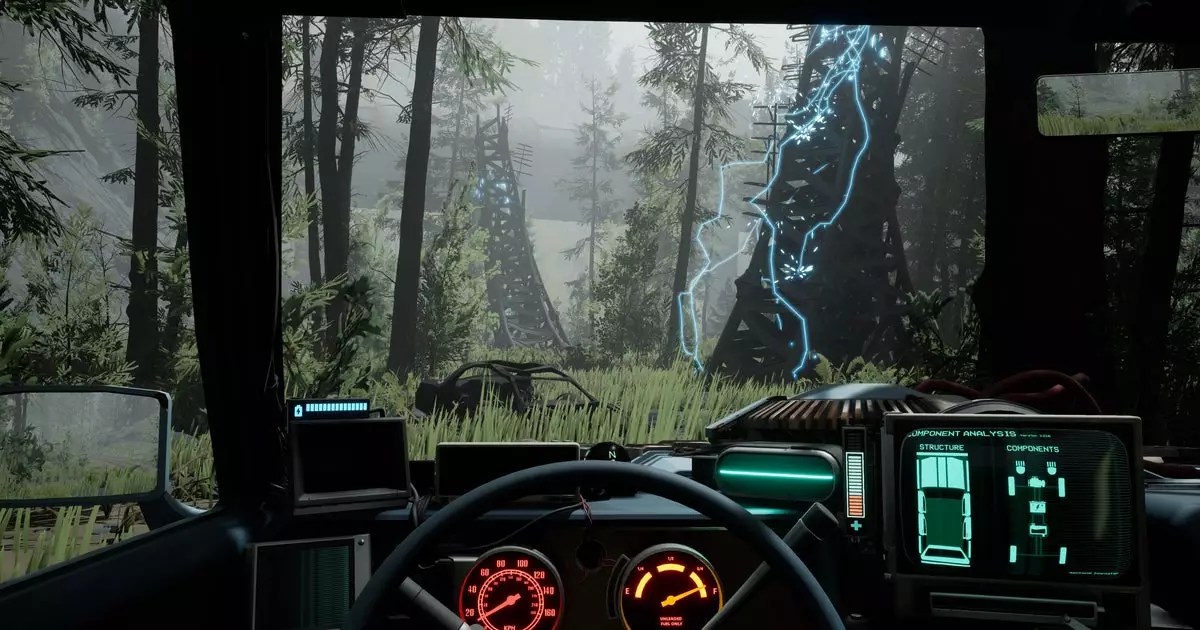In the gripping realm of looter-shooter games, Pacific Drive stands out by immersing players in a survival experience driven by both resourcefulness and relentless danger. Players navigate through a haunting landscape in a deteriorating, yet charmingly retro, station wagon that symbolizes the fragile balance between survival and destruction. The requirement of constant vehicle upkeep—repairing corroded doors and swapping out worn-out engine components—mirrors the existential struggle of the game itself, where every decision can lead to salvation or doom.
The original game garnered appreciation for its immersive atmosphere, often described as “trunk loads of atmosphere.” However, the gameplay was not without its criticisms. Many players found the crafting requirements laborious, often feeling bogged down by the sheer amount of car repairs and modifications necessary to keep their journey alive. This balancing act between crafting and adventure was a sticking point, prompting the developers, Ironwood Studios, to rethink the way players engage with the game.
In response to feedback, the latest update offers a refreshing array of difficulty options that cater to various playstyles and preferences. Players craving an easier experience can now choose the “Scenic Drive” mode, minimizing crafting needs and removing any risk of character death. This change reflects a broader trend in gaming where developers recognize the necessity of accessibility—making sure that everyone can enjoy their creations, regardless of skill level.
Conversely, for players who thrive on challenges, options like “Olympic Gauntlet” and “Iron Wagon” intensify the game’s stakes dramatically. The “Olympic Gauntlet,” for example, greatly increases hazards, crafting complexity, and vehicle damage, creating a near-impossible mission where every choice is critical. The “Iron Wagon” mode raises the stakes even further by imposing the audacious penalty of deleting save files after a failed run. This feature will likely appeal to hardcore gamers, but it serves as a double-edged sword—while it amplifies the thrill, it may also alienate players who value narrative over relentless challenge.
The update introduces a suite of customizable difficulty sliders that empower players to tailor their experience. This kind of flexibility allows gamers to adjust various elements to suit their playing style; they can make tires flatter, increase the effects of radiation, or even toggle the severity of the infamous “instability storms.” The comedic yet deadly addition of the “Trunk Bonk kills” feature highlights a quirky yet serious tone that mocks the dangers of everyday life mixed into the game’s context.
The customization element is crucial in bridging the gap between diverse player skill levels. It acknowledges that not everyone approaches a game with the same mindset, encouraging players to find their ideal balance and enhance their enjoyment without being overwhelmed.
Another noteworthy addition is the ability to incorporate personal music into the game via the car radio and garage jukebox. This feature indicates the developers’ understanding of the community’s sentiments, solidifying the game’s soundtrack as an integral part of the experience. For many players, music enhances immersion and emotional connection to the game—a sentiment echoed by those who appreciated tracks like “Bloodoath” by Exes & Petey.
Critically, while the update shakes up gameplay mechanics and introduces new levels of challenge, it also attempts to retain the essence of what made Pacific Drive captivating in the first place. The atmospheric design, coupled with an engaging soundtrack, not only pulls players into its world but also retains the unpredictability that defines the roguelike genre.
Conclusion: The Balancing Act of Difficulty
Ultimately, this update serves as a compelling reminder that balancing difficulty in games is no easy feat. By allowing players to tailor their experiences, Ironwood Studios addresses the diverse tastes within its community. The balancing act between accessibility and challenge is delicate, but by providing this flexibility, the developers ensure that Pacific Drive remains an engaging journey, whether you prefer a leisurely ride or a heart-pounding trek through its treacherous landscape. As the game evolves, it continues to challenge not only players’ skills but also the conventions of game design itself, carving out a niche that fulfills various aspects of what makes gaming enjoyable.


Leave a Reply